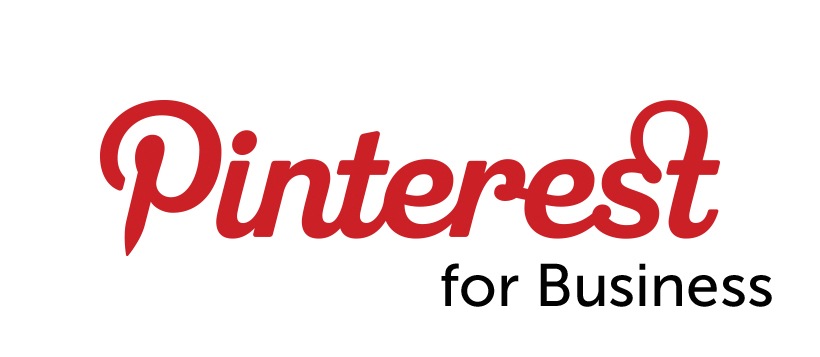Let’s be real.
Managing a content marketing team without the right workflow templates is like trying to run a marathon in dress shoes. It’s stressful, slow, and bound to trip you up.
Nobody ever goes, “Yeah, I wish my content workflow was more chaotic.” But plenty of people tell themselves, “Eh, we’ll figure it out.” That sentence has cost marketing teams months of content and more sanity than most are willing to admit.
I’ve lived that mess.
Sticky notes everywhere, drafts flying around in email threads, half-baked content ideas disappearing between Slack messages. The worst part is thinking you’re doing quality content when, secretly, every part of the content process is a pain.
If you’re trying to build a content marketing team that actually enjoys making good work (and doesn’t get burnt out by the mess in between) you need workflow solutions. Not more hacks, not more “productivity” podcasts, but real-deal, software tools built for this. So here’s an honest look at what works, what doesn’t, and how to decide on the right workflow management tool for your crew (without the usual salesy pitch).
Why Content Workflow Matters (Even If You Think You Don’t Need It)
It took me a long time (stupidly long) to admit my system was the bottleneck. Most content teams can get by for a while on adrenaline, a Google Sheet, and wishful thinking. But without a content workflow, quality drops off, new content gets stalled, and things like content distribution or optimization just don’t happen.
Maybe that’s fine for a personal blog. But if you’re responsible for an entire content arm, or trying to create high-quality content across multiple formats and audiences? You need more than vibes.
A good workflow does two things:
1. Makes your content creation process less painful by putting everyone on the same page, even if your team’s hybrid or remote.
2. Actually gives you a shot at doing consistent, quality work—enough that you’re proud to put your name on it, not just “get it out the door.”
It’s not about looking fancy. It’s about giving your team space to create the content you want to create, regularly, at a high level. That’s how you build real value, instead of just playing productivity Tetris.
What Makes Good Content Workflow Software? (And What’s Overhyped)
Let’s get the nonsense out of the way.
You don’t need a shiny dashboard so complicated your team spends more time in meetings about the tool than making content.
You don’t need a system that requires hiring another person just to manage the software for your organization.
You do need a content workflow management software that actually streamlines the right workflow steps for your specific needs:
- Brainstorming and capturing content ideas, new and recycled.
- Assigning, drafting, reviewing, and publishing content across multiple formats (audio, video, blogs, guides, whatever).
- Batch-scheduling and tracking deadlines—without constant nagging.
- Built-in feedback, so you can tighten up quality content before it’s live.
- Automation where it matters (not just for the sake of “automation”).
The perfect content workflow software is the one your content marketing team actually uses. If it takes three days to onboard, it’s probably wrong for you. If it makes building a content plan harder, bin it.
The Shortlist: Content Workflow Solutions That Don’t Suck
I did a fresh search to double-check what’s actually working for teams in 2024, looking for options that help streamline your content creation process end to end. Here’s what keeps coming up—tools marketers aren’t just buying, but actually sticking with.
1. Notion
My personal favorite. Notion is a content workflow software that gets mentioned in every conversation, and for good reason. With workflow templates for everything from content ideas to entire content calendars, you can set up your own system or use free community ones.
It’s easy to update, share, and track every part of the content—from ideation to final content distribution. If you’re building a content team that’s creative and slightly chaotic (in a good way), Notion’s flexibility lets you keep things loose but organized.
The downside: Notion isn’t specialized for content marketing teams. If you need strict controls over content production process and approval flows, it can get unwieldy as your team grows.
2. Airtable
Airtable stands out as a workflow management tool that straddles spreadsheet functionality and database power. You can map your entire content across multiple platforms, pull new content ideas into one tab, and track who’s responsible for what.
Content workflow management software here looks more visual than you’d expect from a boring task system. It’s great for teams who want both flexibility and clear structure. You can link content you want to create to each stage—brainstorm, approve, assign, publish—using simple drag-and-drop workflows.
One catch is that heavy customization can require some upfront setup, but you’ll get a system that fits the exact needs of your content marketing team.
This one is awesome. Check it out.
3. Trello (with Power-Ups)
Trello has been around so long it’s easy to overlook. But as a part of the content production process, its card-and-board system can make your workflow visible and dead simple, especially if your content team doesn’t want bells and whistles. Workflow templates are easy to duplicate, and Power-Ups add stuff like calendar views, content optimization checklists, and streamlined approvals without a steep learning curve.
Trello works for content you need to keep moving: draft, review, approve, publish, track. It’s not as feature-rich for content optimization, but it’s easy to onboard everybody, especially freelancers or temporary teammates.
4. Asana
Asana takes things up a notch when it comes to tracking the entire content creation process and staying accountable. It’s popular with marketing teams who want more workflow solutions attached to big-picture campaigns.
You can set recurring tasks for posting new content regularly, automate handoffs for different parts of the content cycle, and get custom notifications. Using the right workflow management within Asana means less checking up on who’s late and more focus on making quality content.
Some people will find its interface cluttered, but once you set up the perfect content workflow software for your content marketing team, the structure helps, especially for larger teams handling content across multiple channels.
5. ContentCal (now part of Adobe Express)
A lot of teams used to swear by ContentCal before Adobe picked it up. The calendar view and approval workflows made it one of the best content workflow software systems for agencies.
If your organization is looking to streamline your content—especially for social media—Adobe Express (with the old ContentCal features) is still decent. You’ll be able to manage everything, from content ideas to scheduled posts, in one spot.
Where it excels is taking your content from brainstorm to scheduled post without losing track in between. Not as great for long-form content or more advanced optimization, but very solid for marketing teams focused on quality content distributed at regular intervals.
6. Monday.com
Monday.com gears its workflow management tool toward high-output marketing teams with several moving parts. With content workflow management software baked in—not just for the content but for campaign management, assets, and collaboration—you get a centralized spot for the entire content creation.
Its templates cover just about all forms of content, from video production to blog series, and the automation tools can handle things like reminding users which content is coming up, whose turn it is for review, and what part of the content has hit a bottleneck.
It can feel a little “corporate,” but if your content marketing team is bigger or includes stakeholders from other departments, the power is worth the tradeoff.
How Do You Pick the Right Workflow Management Tool?
There’s no “best” content workflow software, only what’s right for your team’s quirks. Whoever claims one tool fixes everything hasn’t run a real team.
Here are 5 things I pay attention to:
-Does this workflow software help teams create high-quality content, or does it just make them more “productive” in a fake way?
-Can you capture and sort content ideas when you’re inspired, not just during meetings?
– How easy is it to see every step of the entire content production process—without clicking through ten screens?
-Can you automate boring tasks without breaking the creative flow?
-How easy is it to move from “here’s a content idea” to “this content is live and being distributed wherever your audience actually hangs out?”
The right workflow isn’t about new content tools every month. It’s about stability. It’s about making your content creation process lighter, so teams can do the work they want to do instead of managing spreadsheets and chasing status updates.
What Happens When You “Decide Which Content” Actually Matters (And Stick to It)
A secret nobody wants to talk about: the messiest part of the content workflow for marketing teams isn’t making content, but deciding which content gets made—and then making sure it actually ships.
Content workflow software helps teams by giving them structure, but it also forces you to answer tough questions:
- Which forms of content are worth the time and money?
- Are we making content just to fill up a calendar, or is everything serving a purpose?
- Is this system making your content creation process easier, or just giving everyone busywork?
I’ve seen teams come alive once they got honest about these. The entire content plan becomes clearer. New content ideas don’t stack up and turn into guilt, they’re prioritized and dropped into the content workflow software for review. The content you create actually means something.
That’s how teams start making their best content creation work. Not by cranking the wheel harder, but by making space for the work that matters. Quality content wins, every time.
Don’t Sleep on Content Optimization and Distribution
Lots of content workflow management software is great at “content in, content out.” But unless you care about content optimization—and have workflow solutions to make it happen—your work never really lands. Same goes for content distribution. If you’re not tracking what’s being published, where it’s showing up, and how it’s performing, you’re leaving money on the table.
Good content workflow software for your organization will make these steps part of the content, not an afterthought. You should be able to check the status of content production, optimization, and distribution from the same place
. And you need to know which content is winning, which is just noise, so you can adjust.Content workflow management software that does all this isn’t a luxury. It’s the difference between building a content machine and running a group chat.
My Take: The Perfect Content Workflow Software Lets You Live Lighter
Here’s where I land after years of running content teams and seeing aggressive software pitches swallow companies whole:
Pick the tool your team will genuinely use, that makes every part of the content workflow lighter and focus on building a content culture that values simplicity over flash.
If you start now, and commit to a system that works for your actual team, you’ll create high-quality content without burning out. You’ll have the right workflow for catching every part of the content cycle, new content ideas, and distribution—and you’ll spend your energy making meaning, not fixing mistakes nobody had to make.
No software in the world will make your content marketing team bulletproof. But setting up the right workflow management tool? That buys you more ease, more freedom, and the breathing room to make—honestly—the only content you need.
Want more clarity for your content team? Book a discovery call and let’s talk through your workflow.








0 Comments